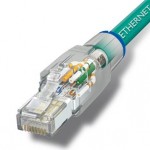IKE Properties
– Negotiate SA attributes, determine transforms, hashing and more
– Generate and refresh keys using DH
– Authenticate peer devices using attributes like IP, FQDN, LDAP DN and more
– It has two phases IKE v1 (Phase 1 and 2) IKE v2 (Init and Auth)
– Main mode & aggressive mode
– ISAKMP negotiates SA for IPSEC. Quick mode & sdoi mode
IKE v2 Advantages
– Simplifies the existing IKEv1
– Single RFC, including NAT-T, EAP and remote address acquisition
– Replaces the 8 initial exchanges with a single 4 message exchange
– Reduces the latency for the IPSEC SA setup and increases connection establishment speed.
– Increases robustness against DOS attack.
– Improves reliability through the use of sequence numbers, acknowledgements, and error correction.
– Forward Compatibility
– Simple cryptographic mechanisms
– Traffic selector negotiation:
– IKEv1: Responder can just say yes/no. IKEv2: Negotiation ability added
– Reliability
– All messages are request/response.
– Initiator is responsible for retransmission if it doesn’t receive a response.
| IKE v1 | IKE v2 |
| Developed in 1998, based on RFC 4995 | Developed in 2006, based on RFC 5996 |
| Pre-shared key and certificate for authentication | Pre-shared key, certificate and EAP variants. Supports for asymmetric authentication. Side A Preshared Key and Side B Certificates. |
| No reliability | Reliable. Introduces retransmission and acknowledgement functions. ack and sequenced |
| Phase 1 generates 6 messages (main mode) 3 messages (aggressive mode) | Reduced bandwidth requirements. generates only 4 messages at all. When EAP is used in IKEv2, an additional 2 messages may be required. |
| Negotiation of the first CHILD_SA required 3 messages. Subsequent CHILD_SAs require 3 messages | Negotiation of the first CHILD_SA required no messages since it is piggybacked onto the negotiation of the IKE_SA. Subsequent CHILD_SAs require 2 messages |
| No NAT traversal (NAT-T) | Incorporation of NAT traversal built-in. Supports NAT traversal using UDP port 4500. |
| No liveness check | Liveness check to detect whether the tunnel is still alive or not. |
| Security Association lifetimes are explicitly negotiated | Security Association lifetimes are not explicitly negotiated. Each peer maintains its own local policy for Security Association lifetime. When the lifetime is about to expire, a rekeying operation is initiated. |
| MOBIKE not available. | Introduces MOBIKE. MOBIKE allows IKEv2 to be used in mobile platforms like phones and by users with multi-homed setups. |
| Both protocols run over UDP port 500. |
| Both protocols provide identify protection, denial-of-service protection mechanism, and perfect forward secrecy. |
| Both protocols utilize two phases. The first phase in each is used to create the IKE_SA. The second phase is used to establish child SAs using the IKE_SA. In IKEv2, the first child SA is piggybacked on the IKE_AUTH exchange that is used to complete the mutual peer authentication. |

Recent Comments